Fabrique
des Lumières
A place of history
The Westergasfabriek is a former coal-fired gasworks built to produce manufactured gas to light the streets of Amsterdam. Culturespaces is bringing the place back to life by creating a large digital art centre holding major immersive exhibitions.
1883
The building of the Fabrique
Way back in 1883, the British Imperial Continental Gas Association built two coal-fired gasworks in Amsterdam - the Oostergasfabriek and the Westergasfabriek - to produce manufactured gas to light the city’s streets.
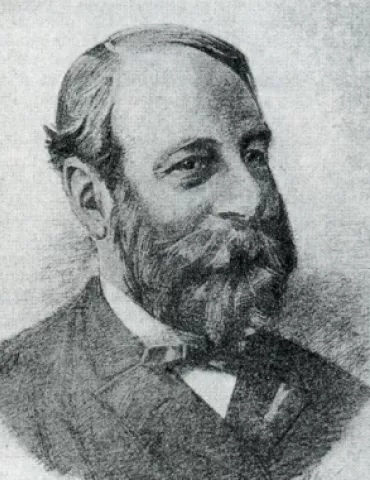
Isaac Gosschalk (1838-1907)
© DR
Engineer Julius Pazzani and architect Isaac Gosschalk, one of the most influential architects of the last quarter of the 19th century and who was also responsible for the Dutch Neo-Renaissance style, were entrusted with the task of building the site.
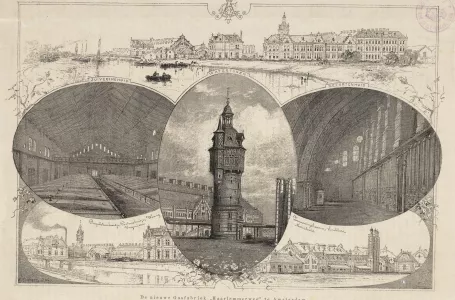
La Westergasfabriek en 1885,
Collectie Stadsarchief Amsterdam: los beeldmateriaal
© City Archive of Amsterdam
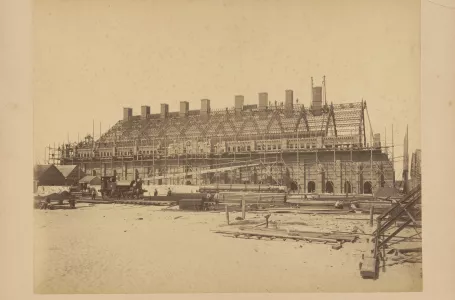
Construction en 1884
Collectie Stadsarchief Amsterdam: foto’s
© City Archive of Amsterdam
The Dutch Neo-Renaissance style is characterised by the importance of symmetry, the use of red and yellow brick and light-coloured stone and the adornments on the façade. The triangular metal frame frees up space in the roof.
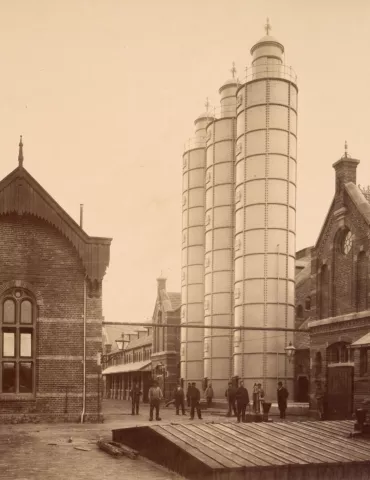
La Westergasfabriek de l’Imperial Continental Gas-Association, 1885
Collectie Stadsarchief Amsterdam: foto’s
© City Archive of Amsterdam
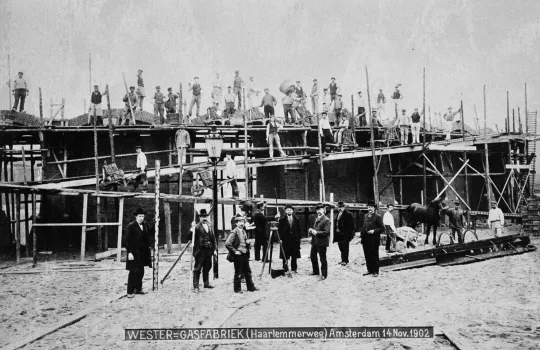
La Westergasfabriek le 14 novembre 1902
Collectie Bureau Monumentenzorg: negatiefvellen
© City Archive of Amsterdam
Completed in 1885, the Westergasfabriek was an extensive 4-hectare complex consisting of several gasometers, coal storage depots, waste-water treatment plants and a water tower.
A building has style if it has personality; if it expresses its true nature discreetly.
Isaac Gosschalk
1898
The success of the Fabrique
The Westergasfabriek was the largest coal-fired gasworks in the Netherlands. The factory became the property of the city of Amsterdam in 1898 and produced all the manufactured gas for the fixed lanterns used to light the streets.
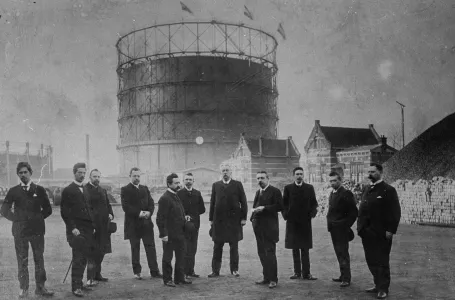
La Westergasfabriek, le 12 décembre 1903
Collectie Bureau Monumentenzorg: negatiefvellen
© City Archive of Amsterdam

La Westergasfabriek, le 23 Juin 1916
Collectie Stadsarchief Amsterdam: foto's
© City Archive of Amsterdam
Increased production resulted in the structure being extended several times at the turn of the century, with the construction of a large 100,000 m³ gasometer in 1902, a boiler room in 1903 and a water gas plant in 1904.
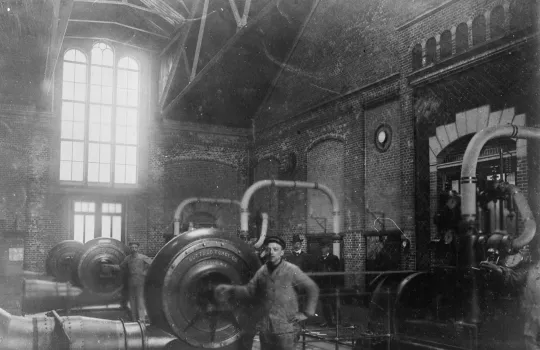
Salle des machines de la Westergasfabriek
Collectie Bureau Monumentenzorg: negatiefvellen
© City Archive of Amsterdam
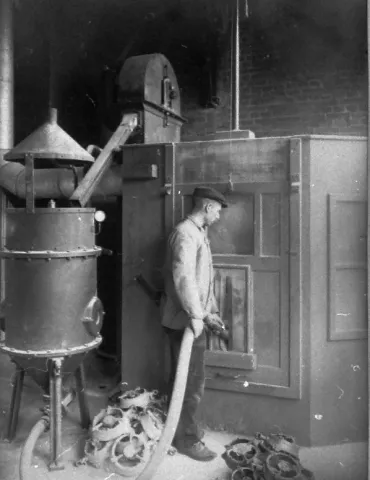
Salle des machines Westergasfabriek
Collectie Bureau Monumentenzorg: negatiefvellen
© City Archive of Amsterdam
The factory was further expanded in the 1950s.
1967
The closure of the Fabrique
The Netherlands discovered vast reserves of natural gas (Slochteren and IJmuiden fields) in the 1960s, which led to the gradual closure of coal-fired gas plants.
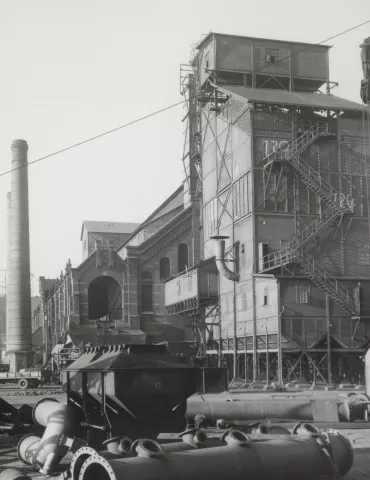
La démantèlement de la Westergasfabriek, 6 janvier 1961
Archief van het Dagblad Het Vrije Volk en rechtsvoorganger: foto’s
© City Archive of Amsterdam
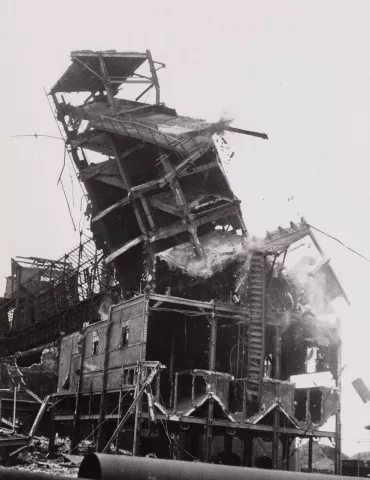
La destruction de la Westergasfabriek, le 23 mai 1961
Collectie Stadsarchief Amsterdam: foto's
© City Archive of Amsterdam
Production ceased in 1967 and the factory was used as storage and garage space.
Buildings that could not be used for storage were demolished, and these notably included the water tower in 1968 and the two gasometers in 1974.
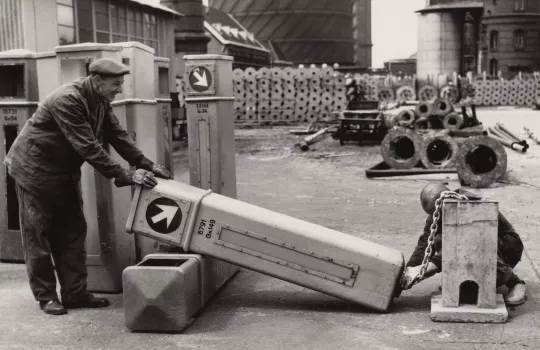
La Westergasfabriek, le 5 juin 1962
Collectie Stadsarchief Amsterdam: foto’s
© City Archive of Amsterdam
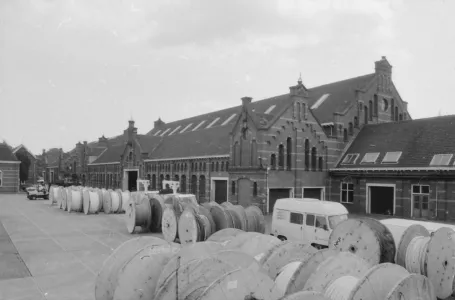
The Westergasfabriek in 1991
Collectie Bureau Monumentenzorg: negatiefvellen
© City Archive of Amsterdam
The municipal energy company used the premises as workshops and warehouses from the late 1960s, before withdrawing from the premises in 1992.
1981
The transformation to a cultural hub
The early eighties are the starting point for plans to redevelop the site as an urban park.

Le Laboratoire central municipal de l’environnement prélève des échantillons de sol sur le terrain de la Westergasfabriek, le 2 décembre 1982
Collectie Stadsarchief Amsterdam: foto’s
© City Archive of Amsterdam
In order to protect the land, which had become extremely polluted as a result of industrial activity, and under the impetus of a neighbourhood initiative, a land use order was passed by the city council in 1981.
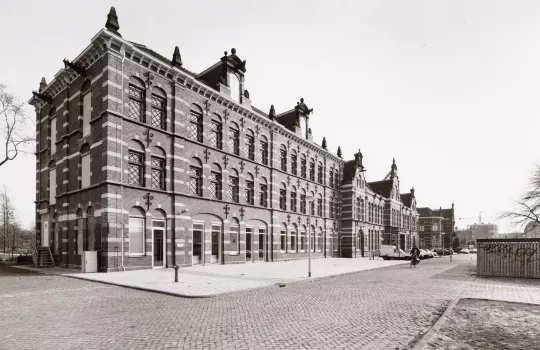
La Westergasfabriek en mars 1992
Collectie Stadsarchief Amsterdam: foto's eigen fotodienst
© City Archive of Amsterdam
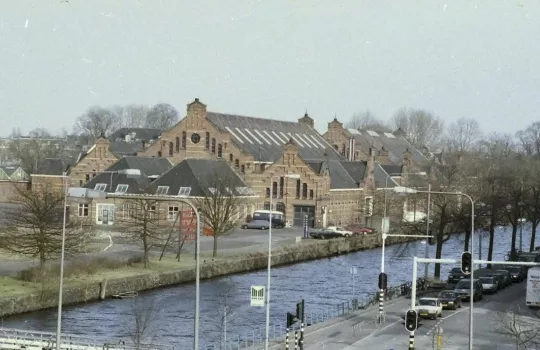
La Westergasfabriek en 1997
Collectie Bureau Monumentenzorg: negatiefvellen
© City Archive of Amsterdam
In 1989, the 22 original industrial buildings were granted ‘national monument’ status.
The purifier building, the transformer building, the gasometer, the regulator house and the machine building were renovated.
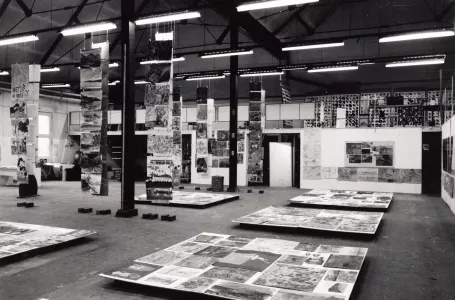
Ancienne Westergasfabriek. L’intérieur de l’atelier d’éclairage public dans le bâtiment d’épuration; exposition avec des dessins de Tchernobyl. En novembre 1993
Collectie Stadsarchief Amsterdam: foto's eigen fotodienst
© City Archive of Amsterdam
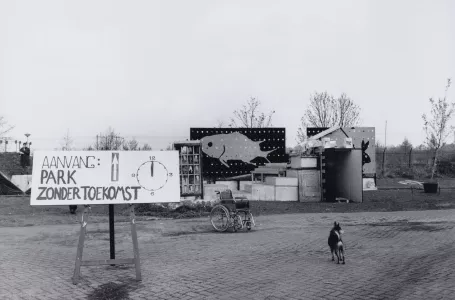
Exposition : « Parc du Futur », À l’occasion du 75ème anniversaire de la Gerrit Rietveld Academie , le 16 avril 1999
Collectie Stadsarchief Amsterdam: foto's eigen fotodienst
© City Archive of Amsterdam
In 1990, the Westergasfabriek project office was set up under the leadership of architect, urban planner and founder of Creative Cities Evert Verhagen. In 1993, the urban district of Westerpark allocated the site for cultural and recreational activities.
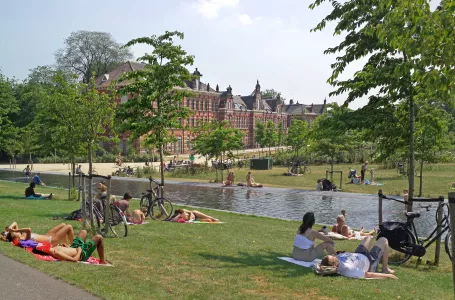
Nouveaux aménagements, le 13 juillet 2006
Collectie Stadsarchief Amsterdam: foto's eigen fotodienst
© City Archive of Amsterdam
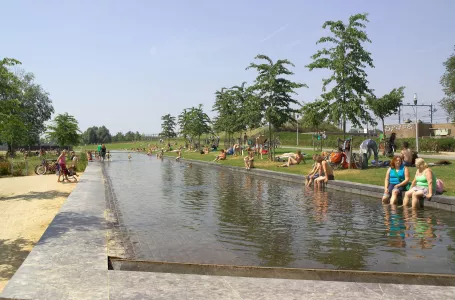
Nouveaux aménagements, le 13 juillet 2006
Collectie Stadsarchief Amsterdam: foto's eigen fotodienst
© City Archive of Amsterdam
The extensive 13.5-hectare site was designed by American landscape architect Kathryn Gustafson. Originally intended to host temporary cultural events (theatre festivals, art fairs, fashion shows…), the park became a permanent cultural centre and officially opened in 2003.
2018
The Fabrique des Lumières
In 2018, Duncan Stutterheim acquired all of the industrial buildings, which were renamed Westergas in 2019, with the aim of turning Westerpark into a culture-oriented living space for the people of Amsterdam.
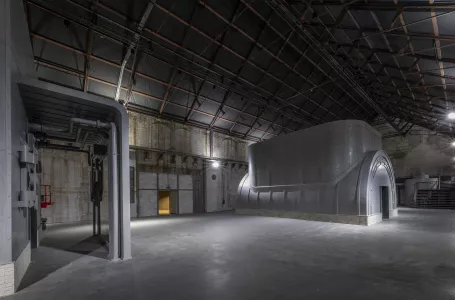
© Culturespaces / Patrick Tanguy
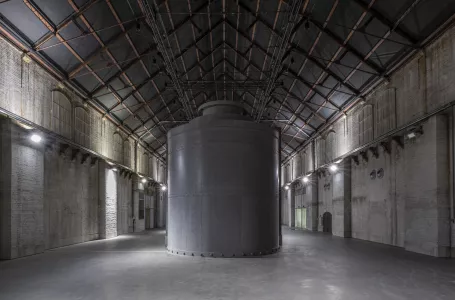
© Culturespaces / Charles Duprat
Duncan Stutterheim presented Culturespaces with the opportunity to invest in the Zuiveringshal, also known as the Gasfabriek, with a view to creating a digital art centre there.
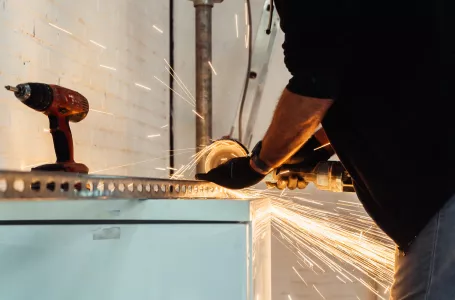
© Culturespaces / Marijn van Laerhoven
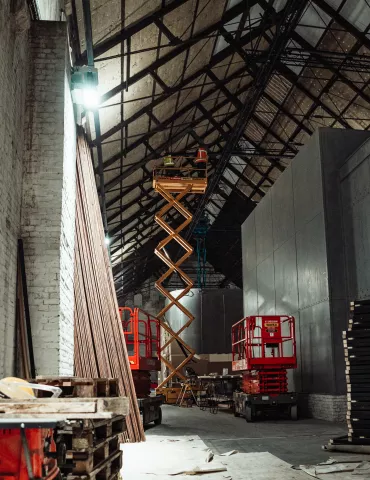
© Culturespaces / Marijn van Laerhoven
Major renovation works are undergone: the building is equipped with technological device and is set up to welcome the public.
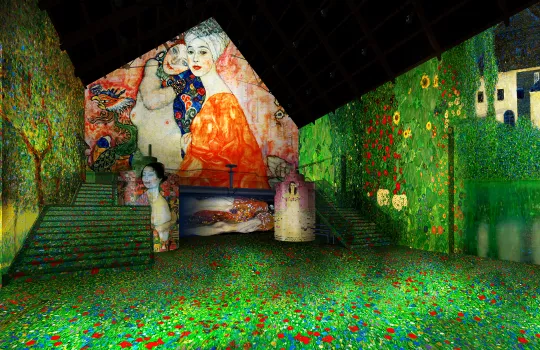
Simulation « Gustav Klimt, d’or et de couleurs » : © akg-images / Erich Lessing ; © Heritage Images / Fine Art Images / akg-images ; © akg-images / Erich Lessing - © Culturespaces / Nuit de Chine
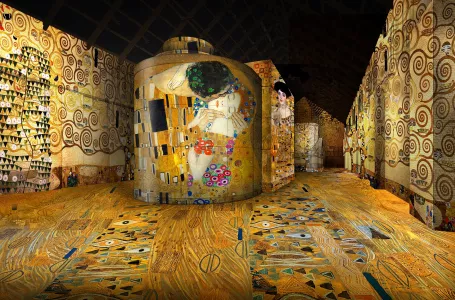
Simulation « Gustav Klimt, d’or et de couleurs » : © akg-images / Erich Lessing ; © De Agostini Picture Library / E. Lessing / Bridgeman Images - © Culturespaces / Nuit de Chine
The Fabrique des Lumières opens to the public on 22 April 2022 with the exhibitions "Klimt, Gold in Motion" and "Hundertwasser".